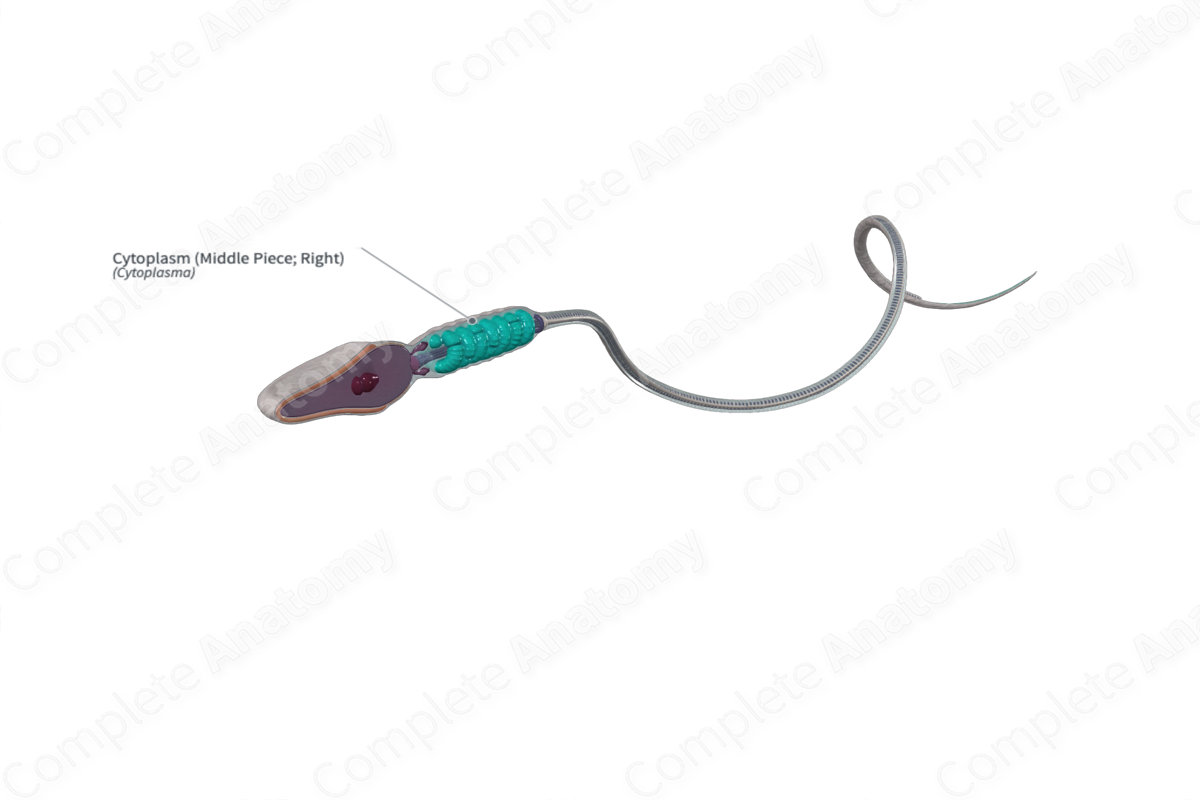
Quick Facts
The cytoplasm is the protoplasm of a cell exclusive of that of the nucleus; it consists of a continuous aqueous solution (cytosol) and the organelles and inclusions suspended in it and is the site of most of the chemical activities of the cell (Dorland, 2011).
Related parts of the anatomy
Structure and/or Key Feature(s)
The cytoplasm of a cell includes an aqueous solution, the cytosol, and the organelles of the cell suspended in it. It is tightly enclosed by the plasma membrane. The sperm contains a limited amount of cytoplasm. During normal spermatogenesis (or maturation), spermatids lose most of their cytoplasm. Remnants may remain as a cytoplasmic droplet at the neck region of the sperm and is shed during ejaculation. However, retention of the droplets may indicate failure of normal maturation and cause infertility (Rengan et al, 2012).
The mature sperm retains a thin layer of cytoplasm underneath the plasma membrane. In the head, the space occupied by cytoplasm between the acrosome and the nucleus is known as the subacrosomal (or perinuclear) space. The cytoplasm between the outer membrane of the acrosome and the plasma membrane is the periacrosomal space.
Function
The cytoplasm is the site where most chemical activities of the cell occur.
References
Dorland, W. (2011) Dorland's Illustrated Medical Dictionary. 32nd edn. Philadelphia, USA: Elsevier Saunders.
Rengan, A. K., Agarwal, A., van der Linde, M. & du Plessis, S. S. (2012) An investigation of excess residual cytoplasm in human spermatozoa and its distinction from the cytoplasmic droplet. Reproductive biology and endocrinology : RB&E, 10, 92-92.
